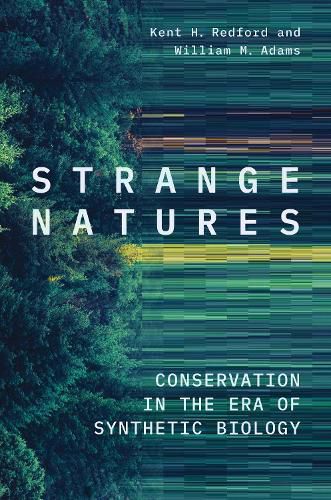Readings Newsletter
Become a Readings Member to make your shopping experience even easier.
Sign in or sign up for free!
You’re not far away from qualifying for FREE standard shipping within Australia
You’ve qualified for FREE standard shipping within Australia
The cart is loading…






A groundbreaking examination of the implications of synthetic biology for biodiversity conservation
What is natural and what is artificial in the era of the Anthropocene? This is the core question addressed by Kent Redford and William Adams’ book, Strange Natures… . It is impressive how the book manages to be so rich in perspectives on such a complex and controversial phenomenon, yet so cautiously and open-mindedly written that it invites contemplation and reflection rather than hasty conclusions. -Adam Wickberg, Global Environmental Politics
Nature almost everywhere survives on human terms. The distinction between what is natural and what is human-made, which has informed conservation for centuries, has become blurred. When scientists can reshape genes more or less at will, what does it mean to conserve nature?
The tools of synthetic biology are changing the way we answer that question. Gene editing technology is already transforming the agriculture and biotechnology industries. What happens if synthetic biology is also used in conservation to control invasive species, fight wildlife disease, or even bring extinct species back from the dead?
Conservation scientist Kent Redford and geographer Bill Adams turn to synthetic biology, ecological restoration, political ecology, and de-extinction studies and propose a thoroughly innovative vision for protecting nature.
$9.00 standard shipping within Australia
FREE standard shipping within Australia for orders over $100.00
Express & International shipping calculated at checkout
A groundbreaking examination of the implications of synthetic biology for biodiversity conservation
What is natural and what is artificial in the era of the Anthropocene? This is the core question addressed by Kent Redford and William Adams’ book, Strange Natures… . It is impressive how the book manages to be so rich in perspectives on such a complex and controversial phenomenon, yet so cautiously and open-mindedly written that it invites contemplation and reflection rather than hasty conclusions. -Adam Wickberg, Global Environmental Politics
Nature almost everywhere survives on human terms. The distinction between what is natural and what is human-made, which has informed conservation for centuries, has become blurred. When scientists can reshape genes more or less at will, what does it mean to conserve nature?
The tools of synthetic biology are changing the way we answer that question. Gene editing technology is already transforming the agriculture and biotechnology industries. What happens if synthetic biology is also used in conservation to control invasive species, fight wildlife disease, or even bring extinct species back from the dead?
Conservation scientist Kent Redford and geographer Bill Adams turn to synthetic biology, ecological restoration, political ecology, and de-extinction studies and propose a thoroughly innovative vision for protecting nature.